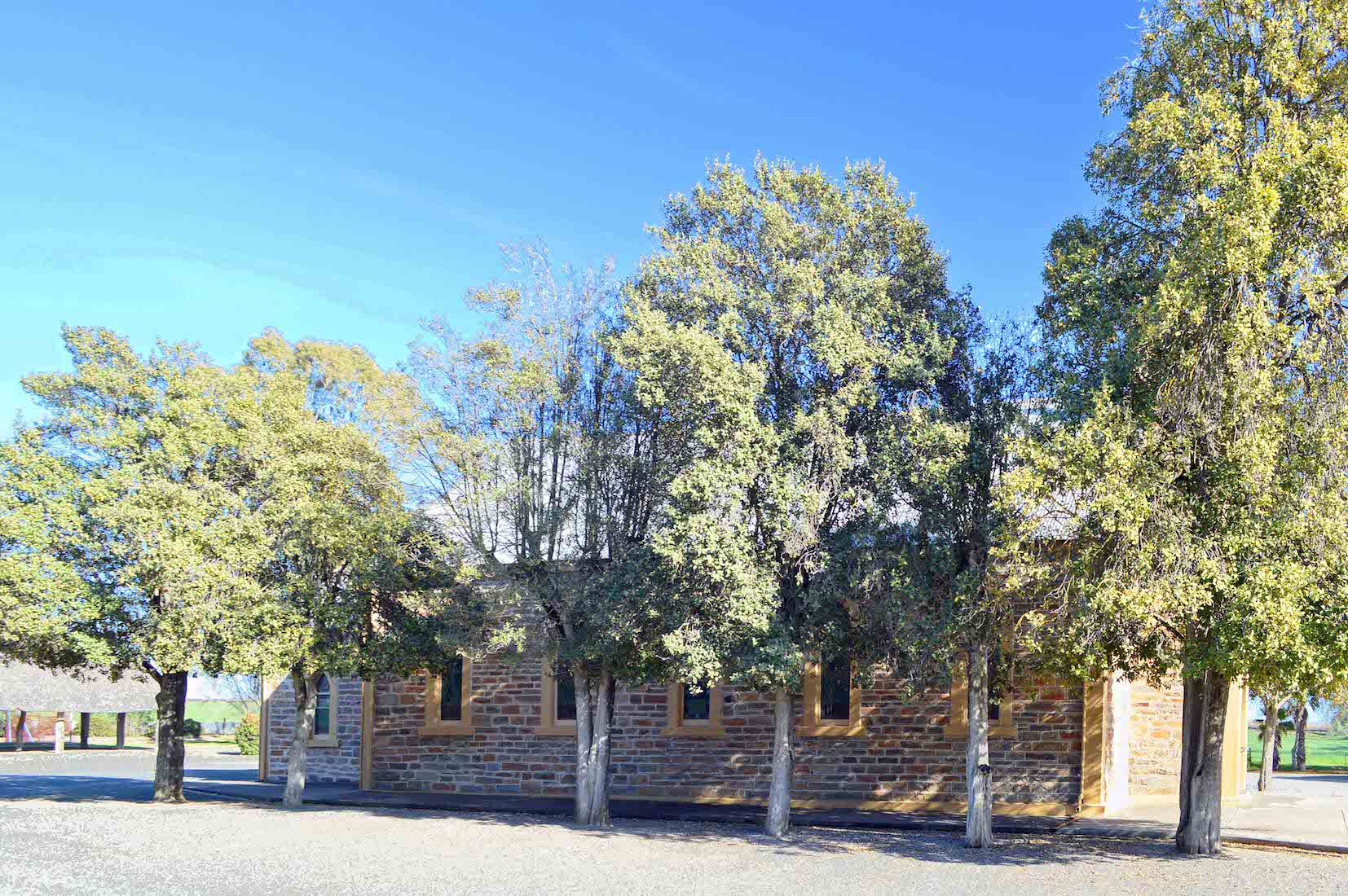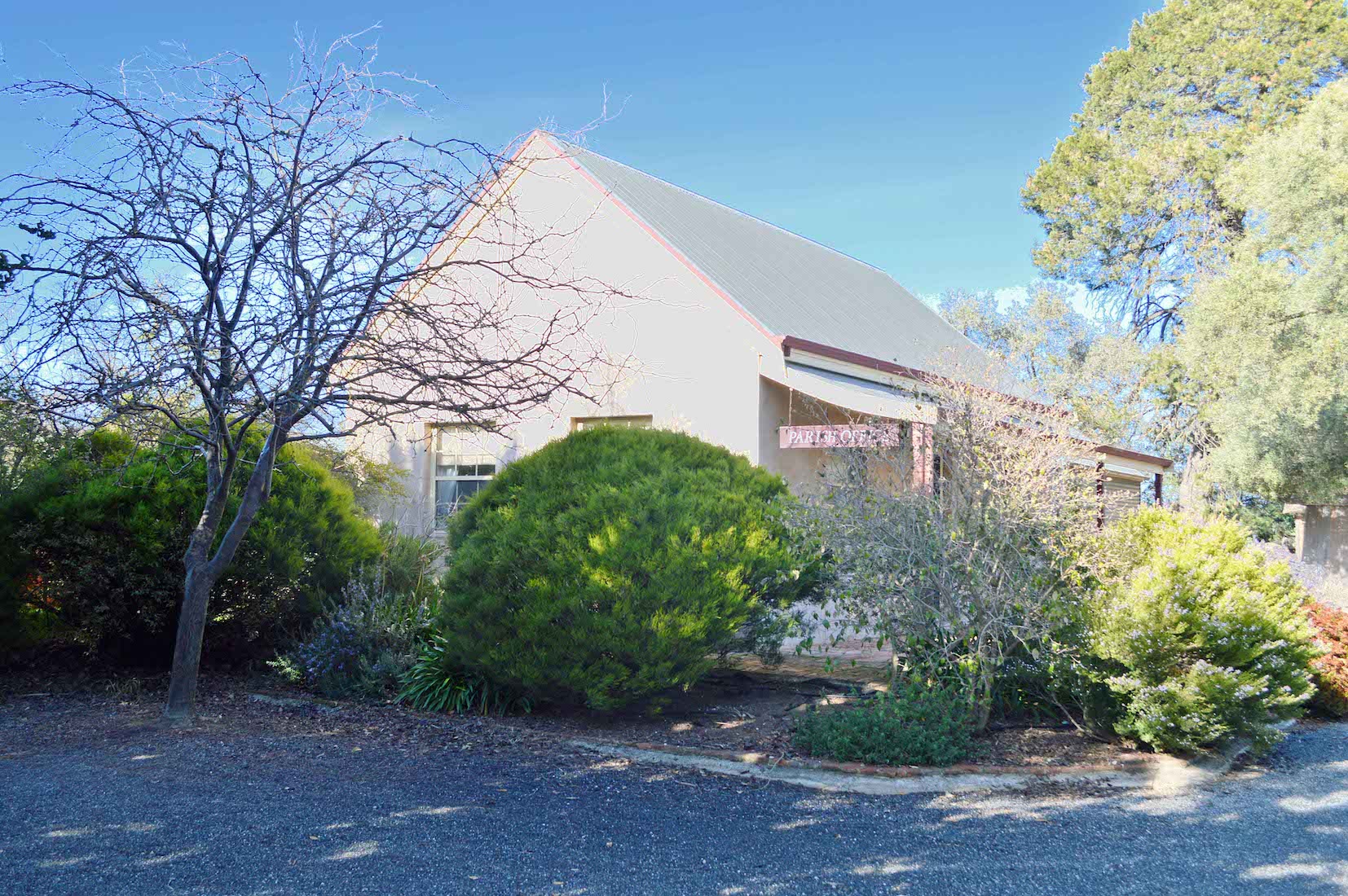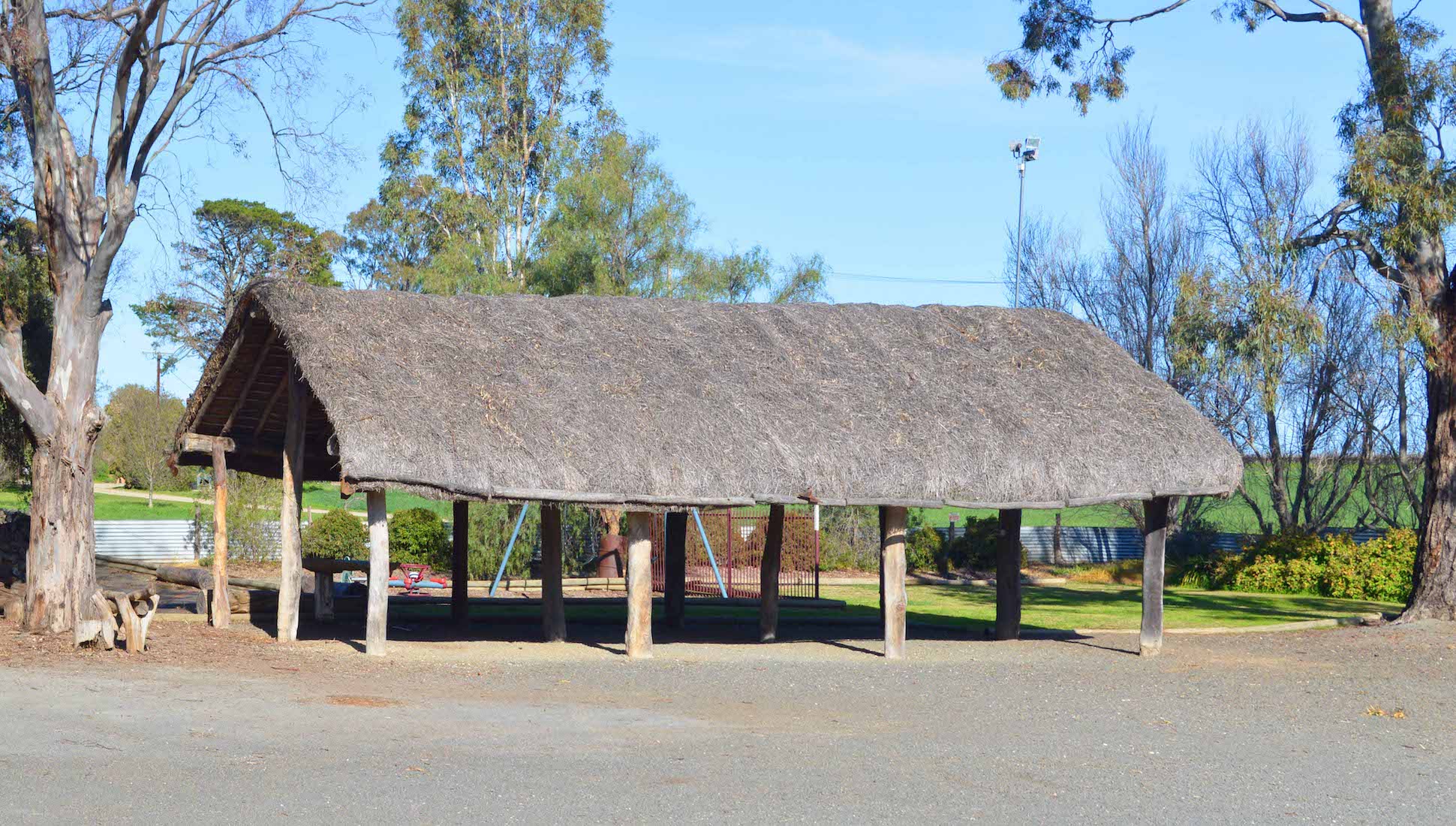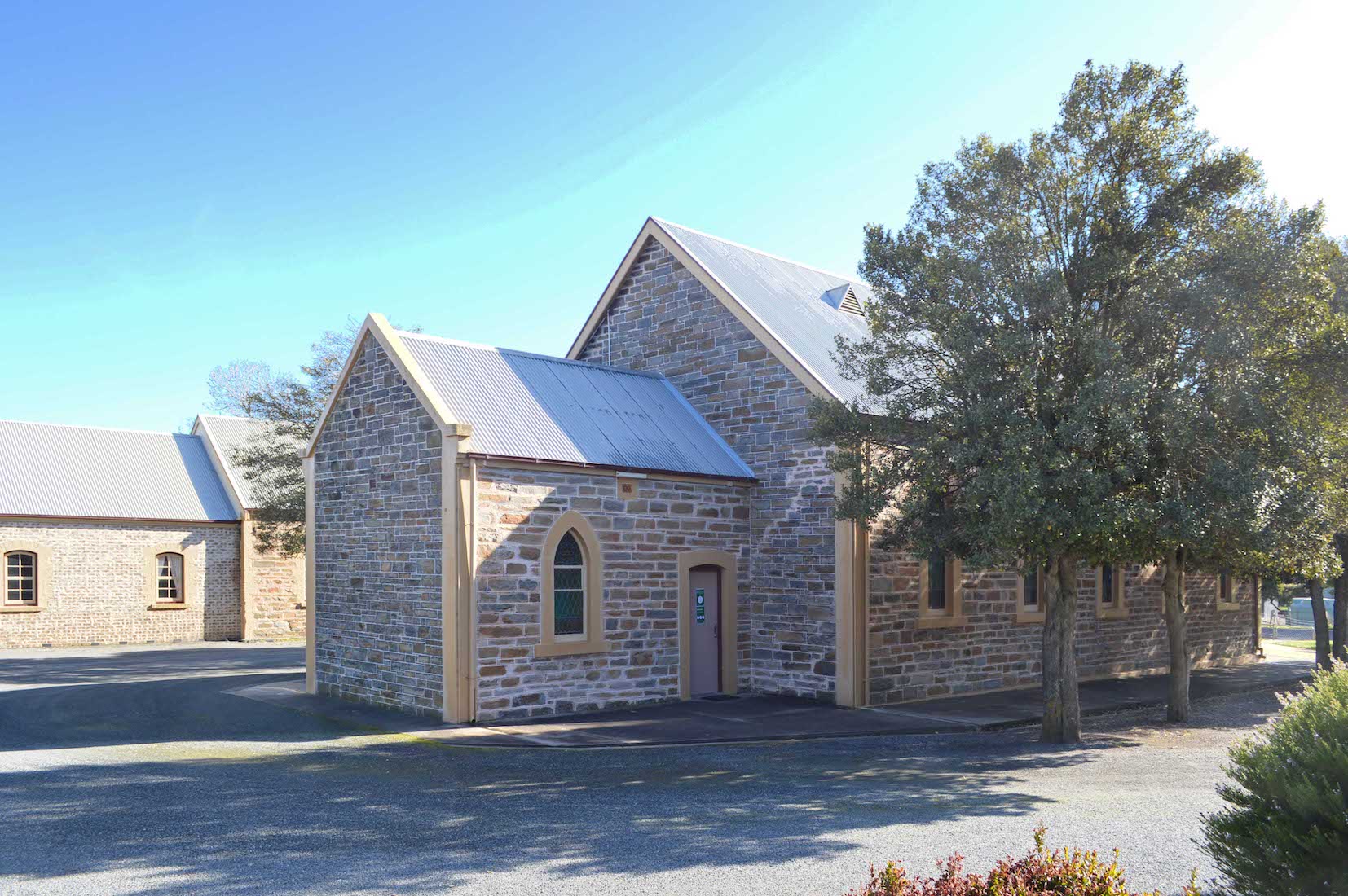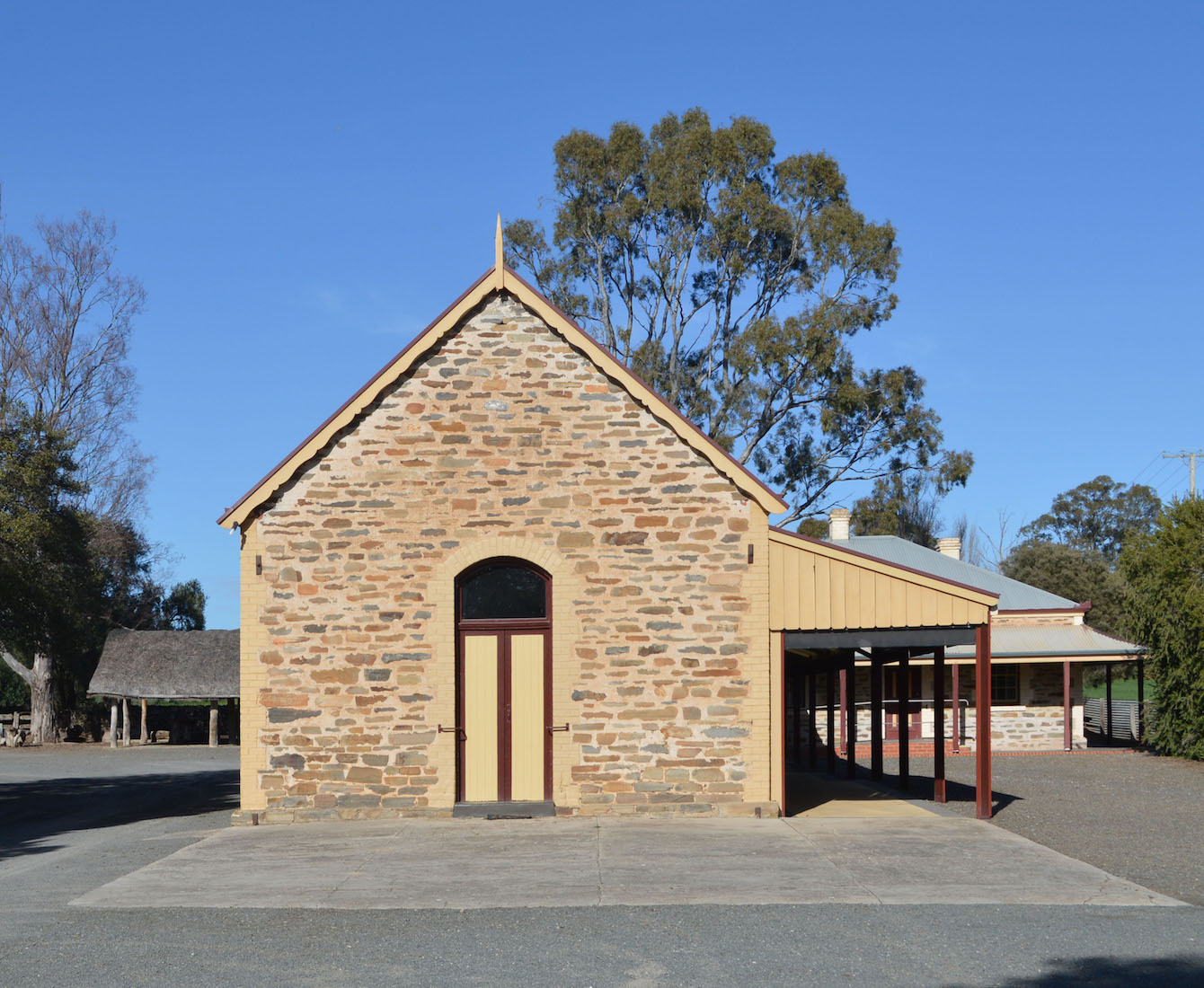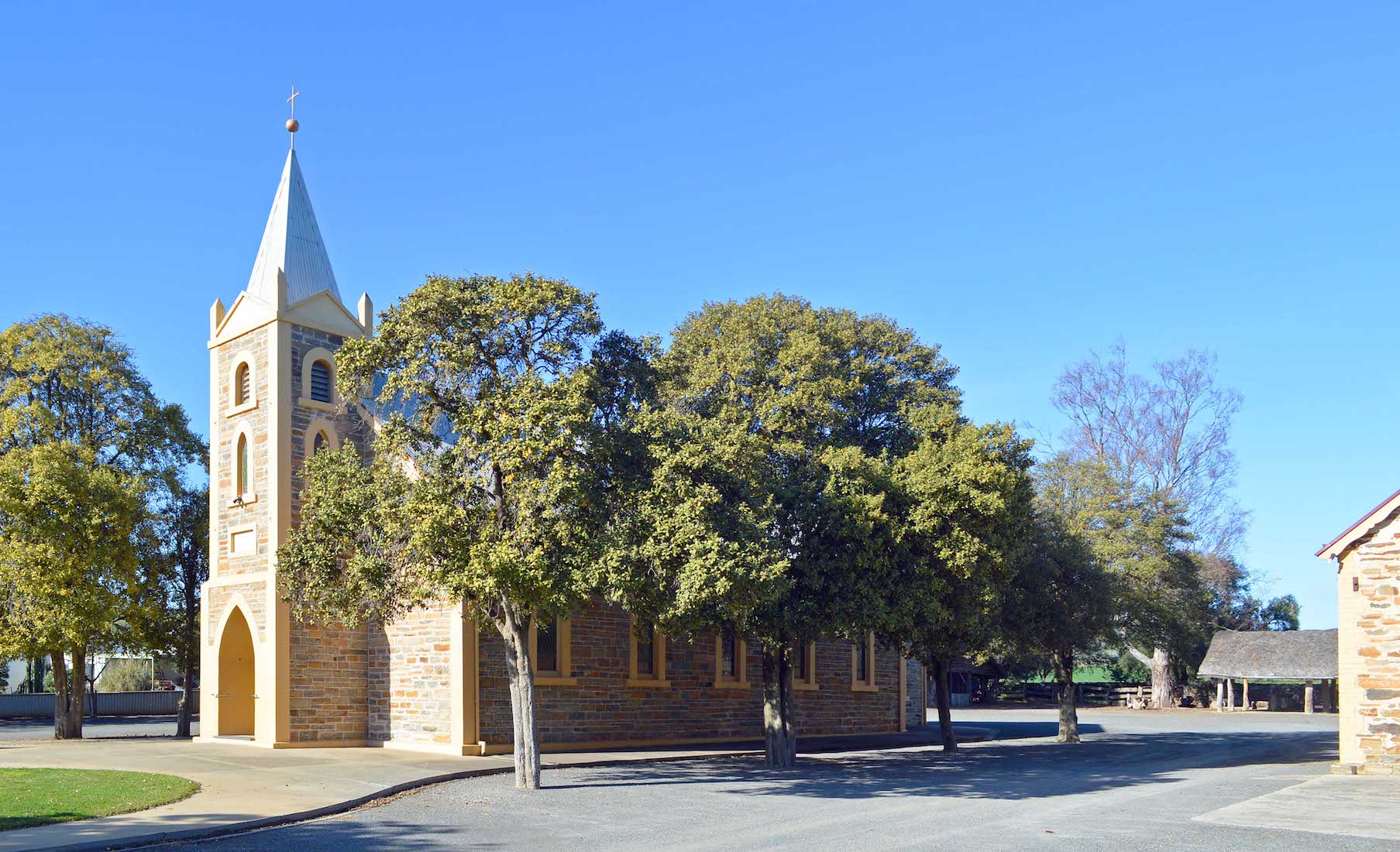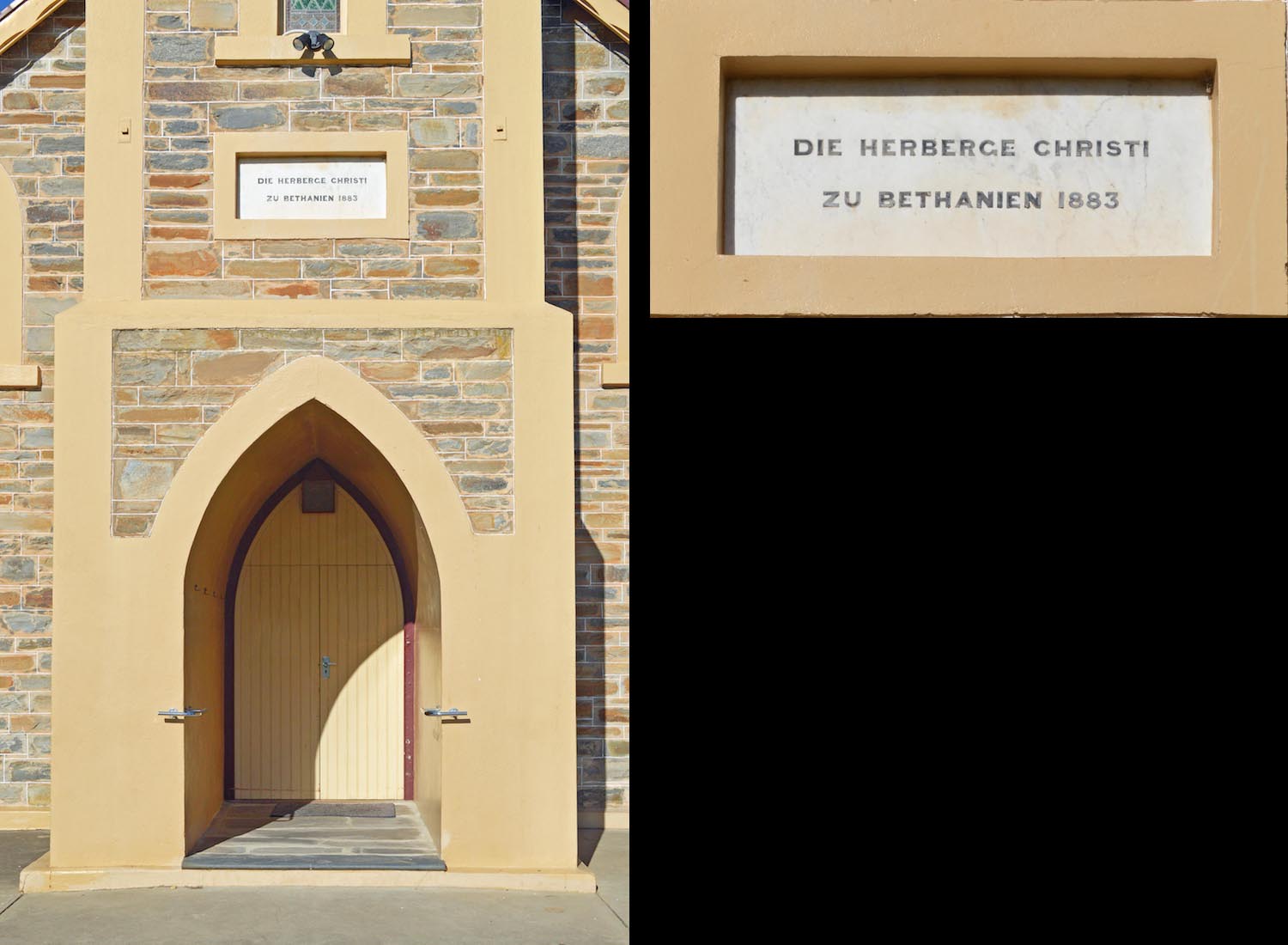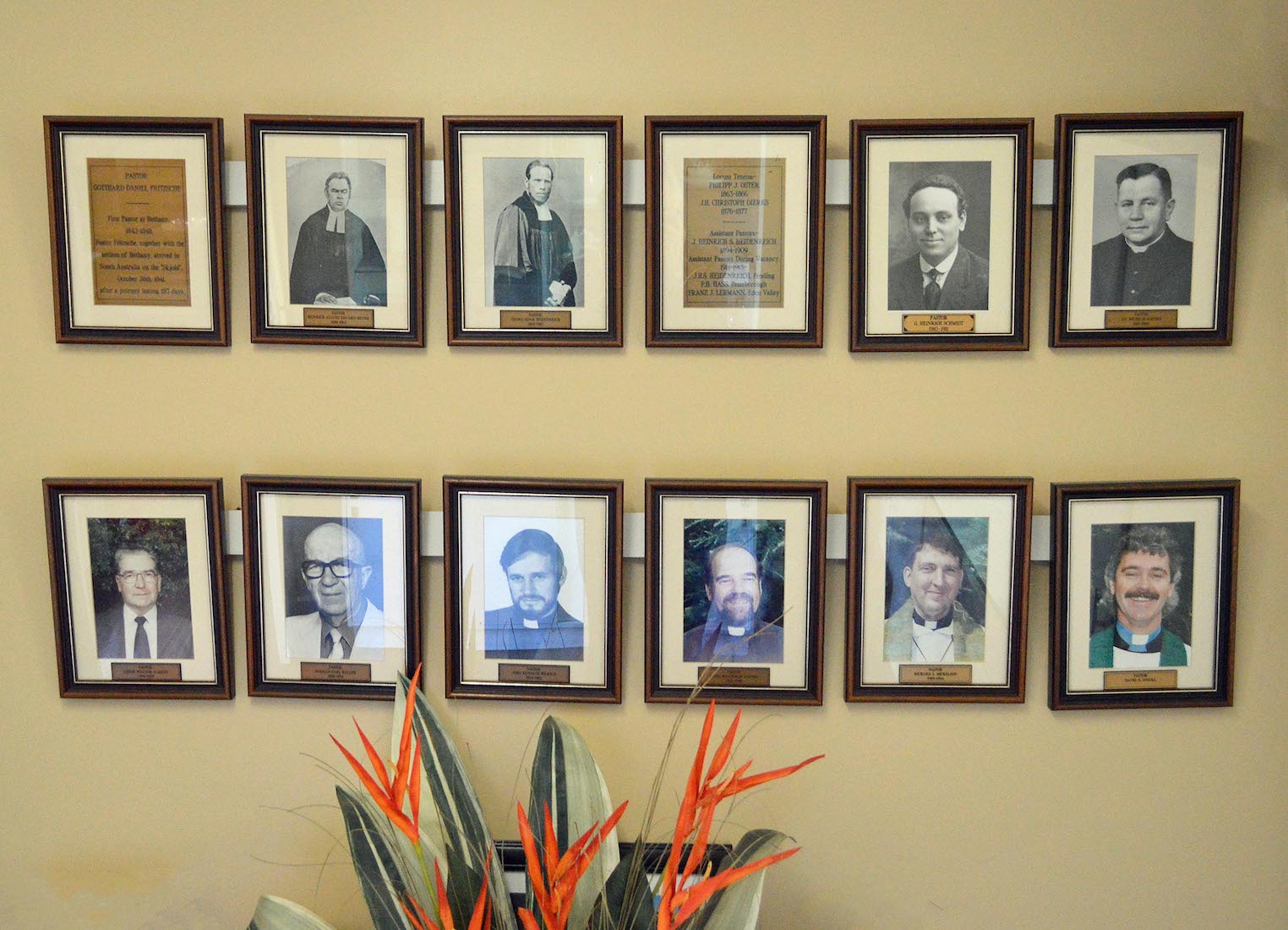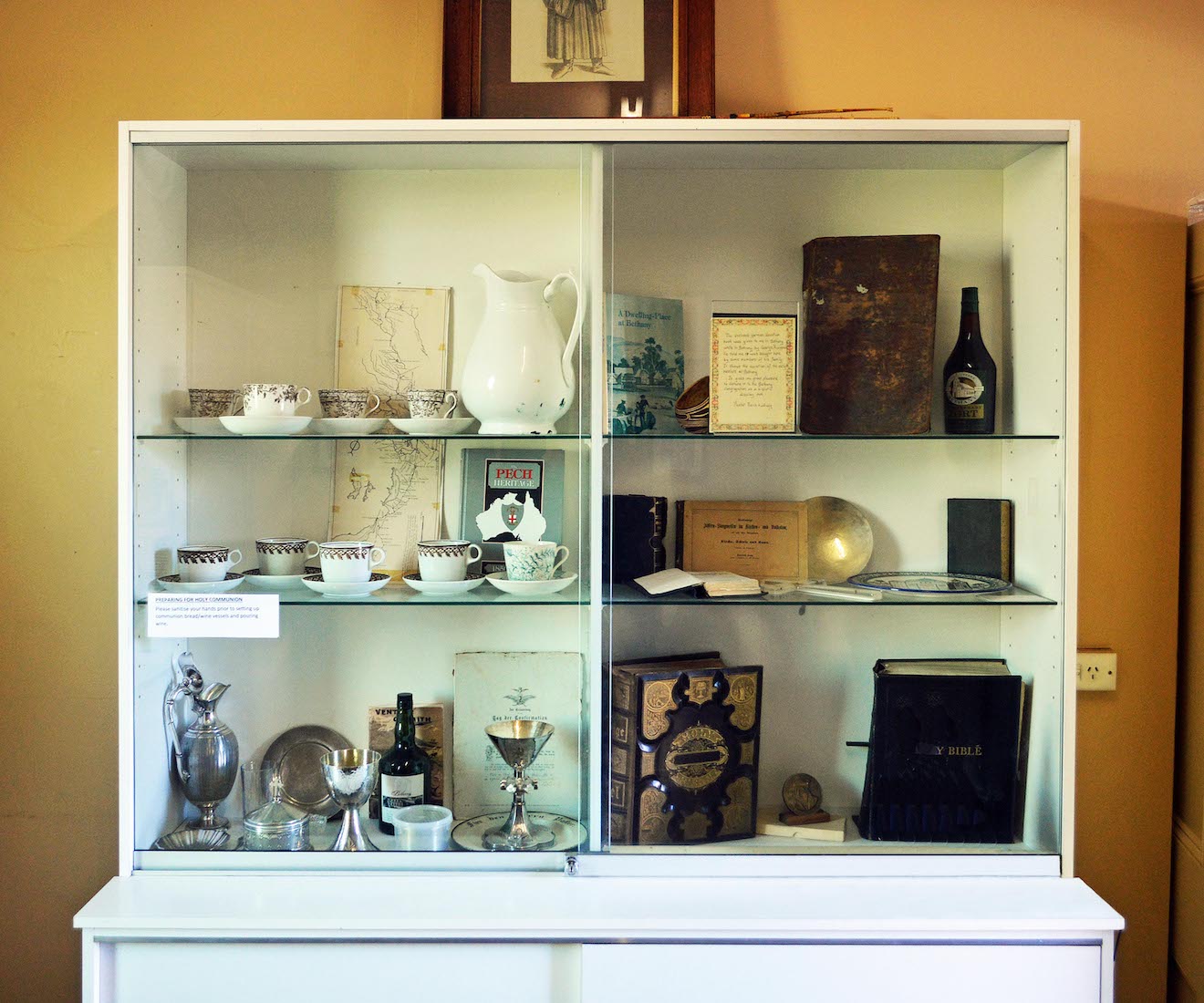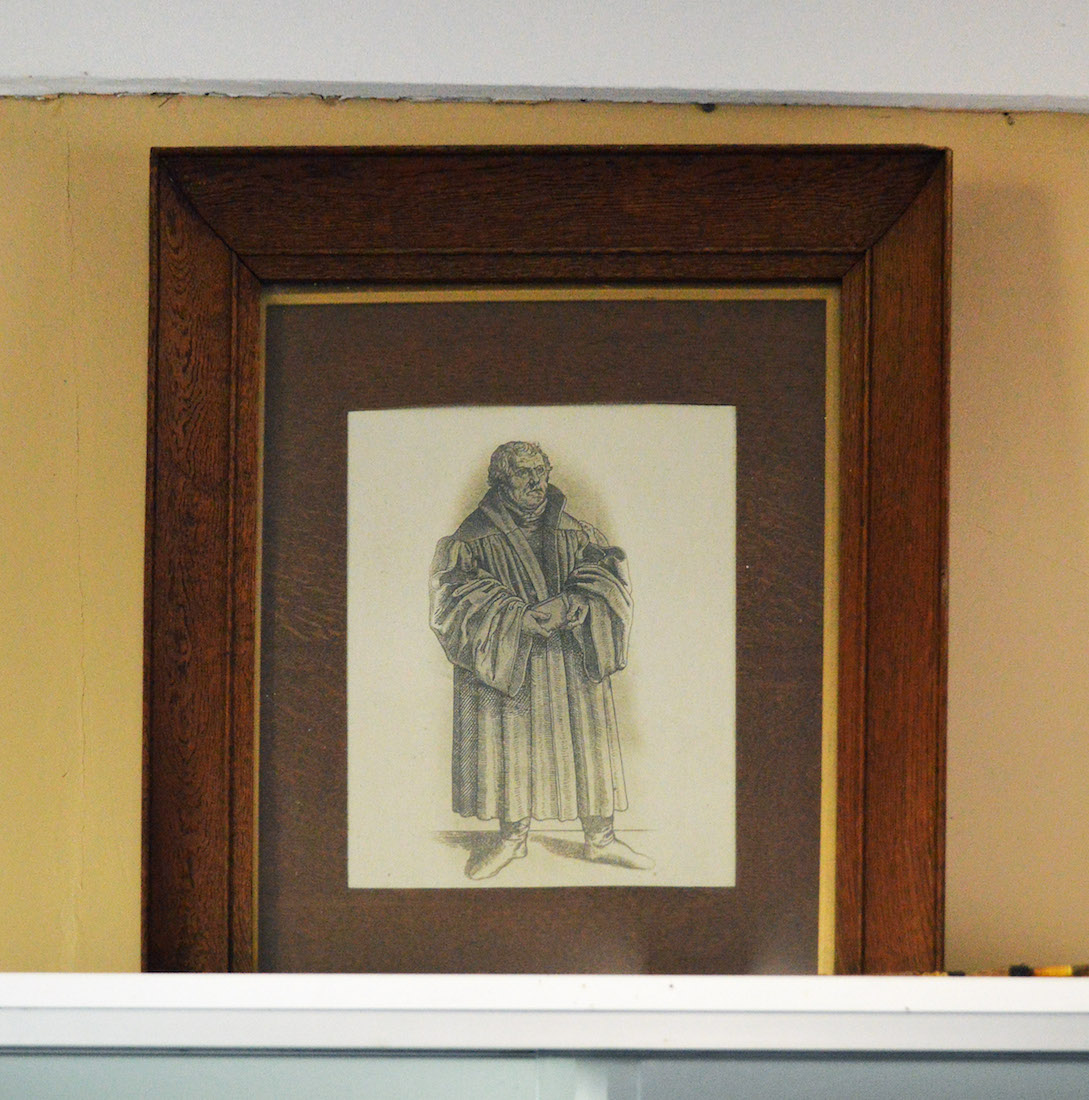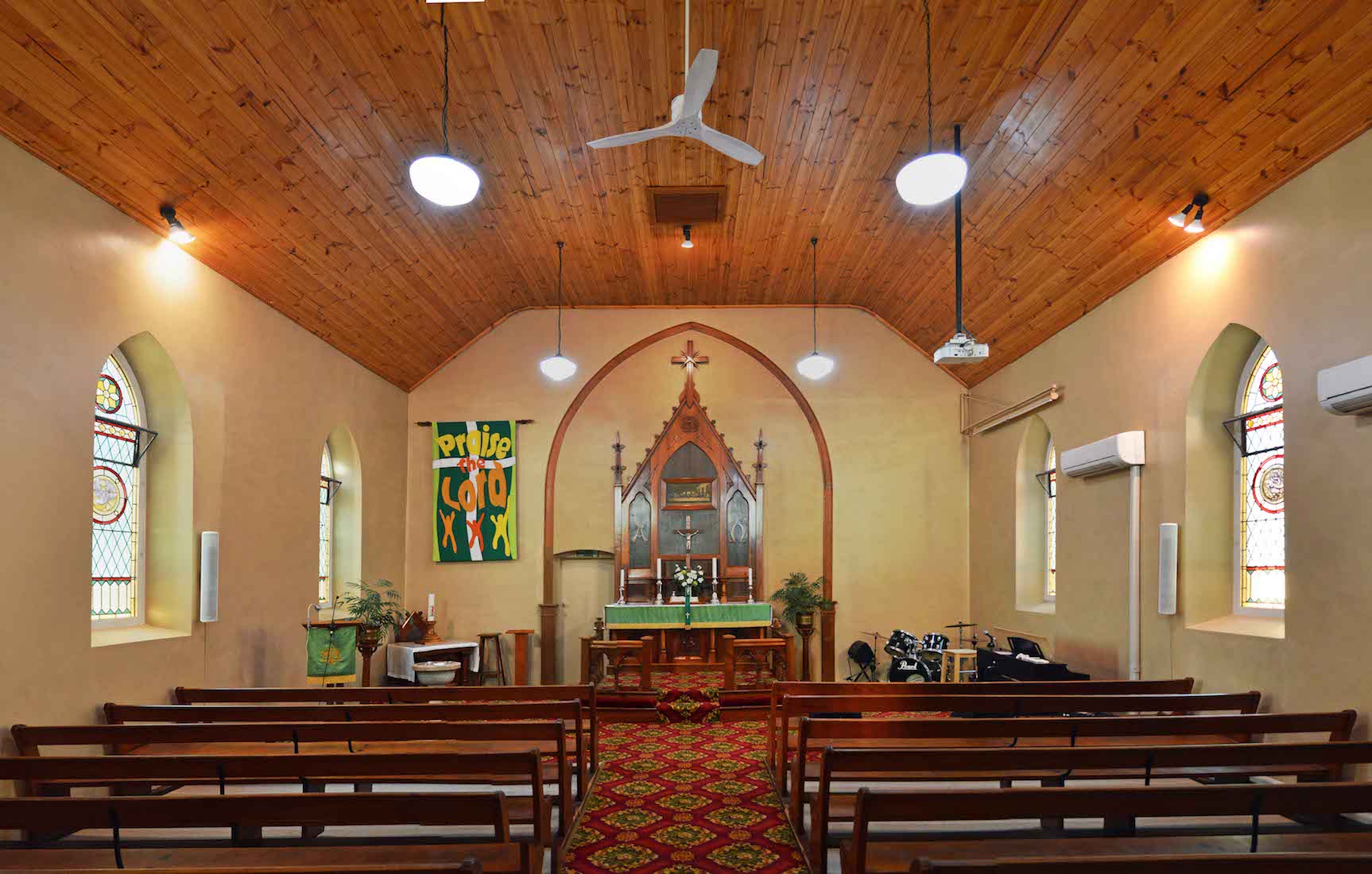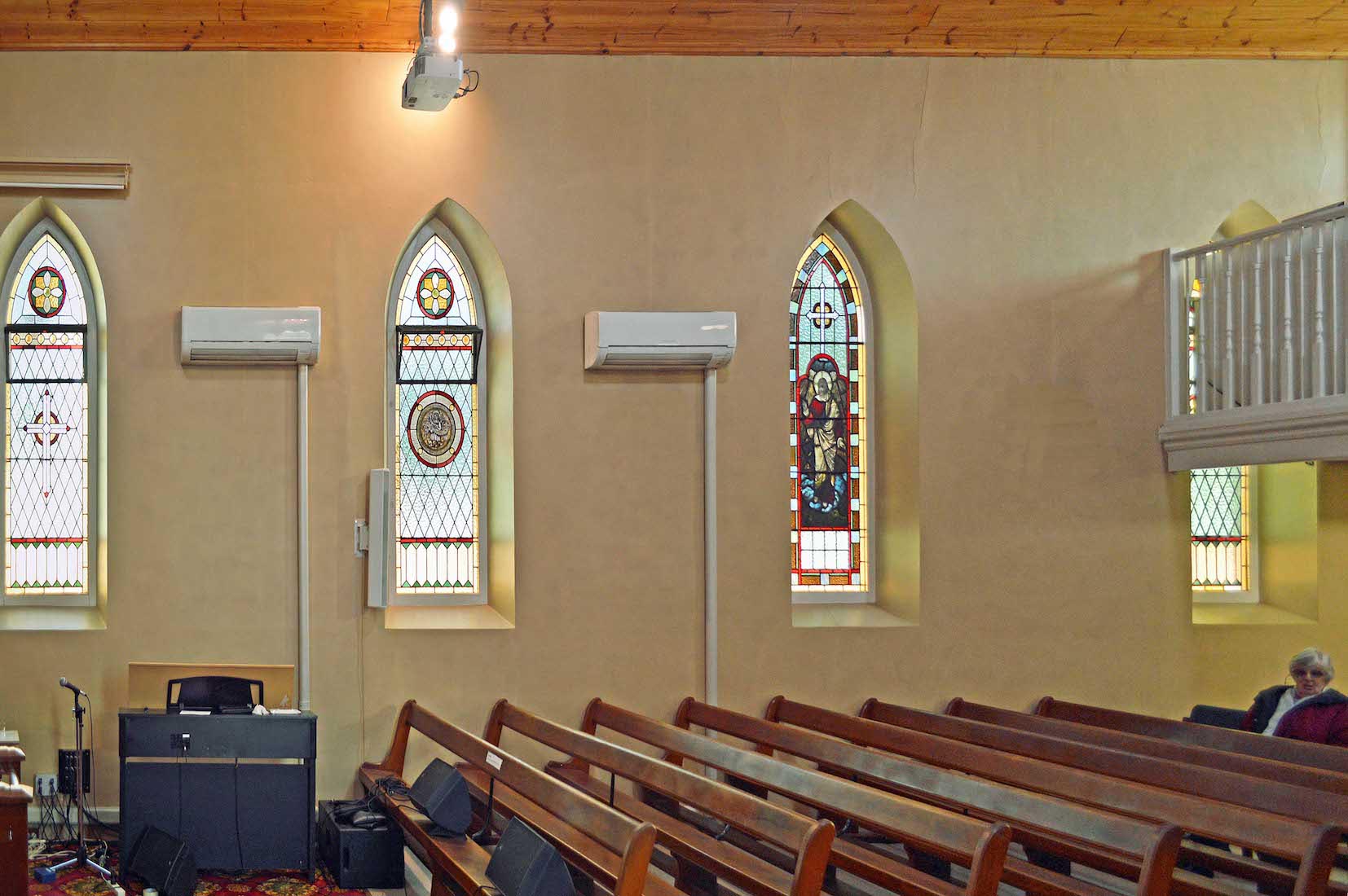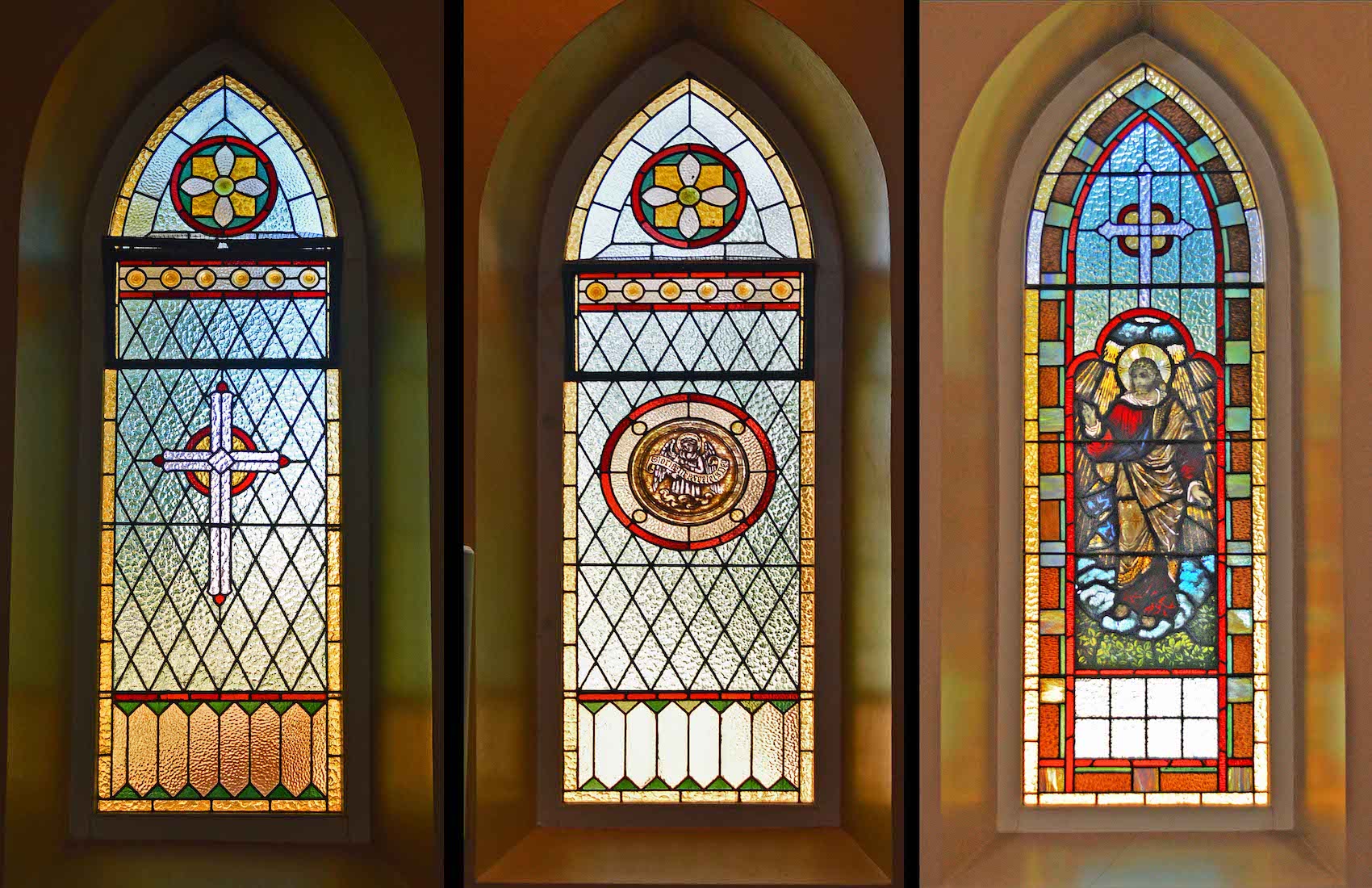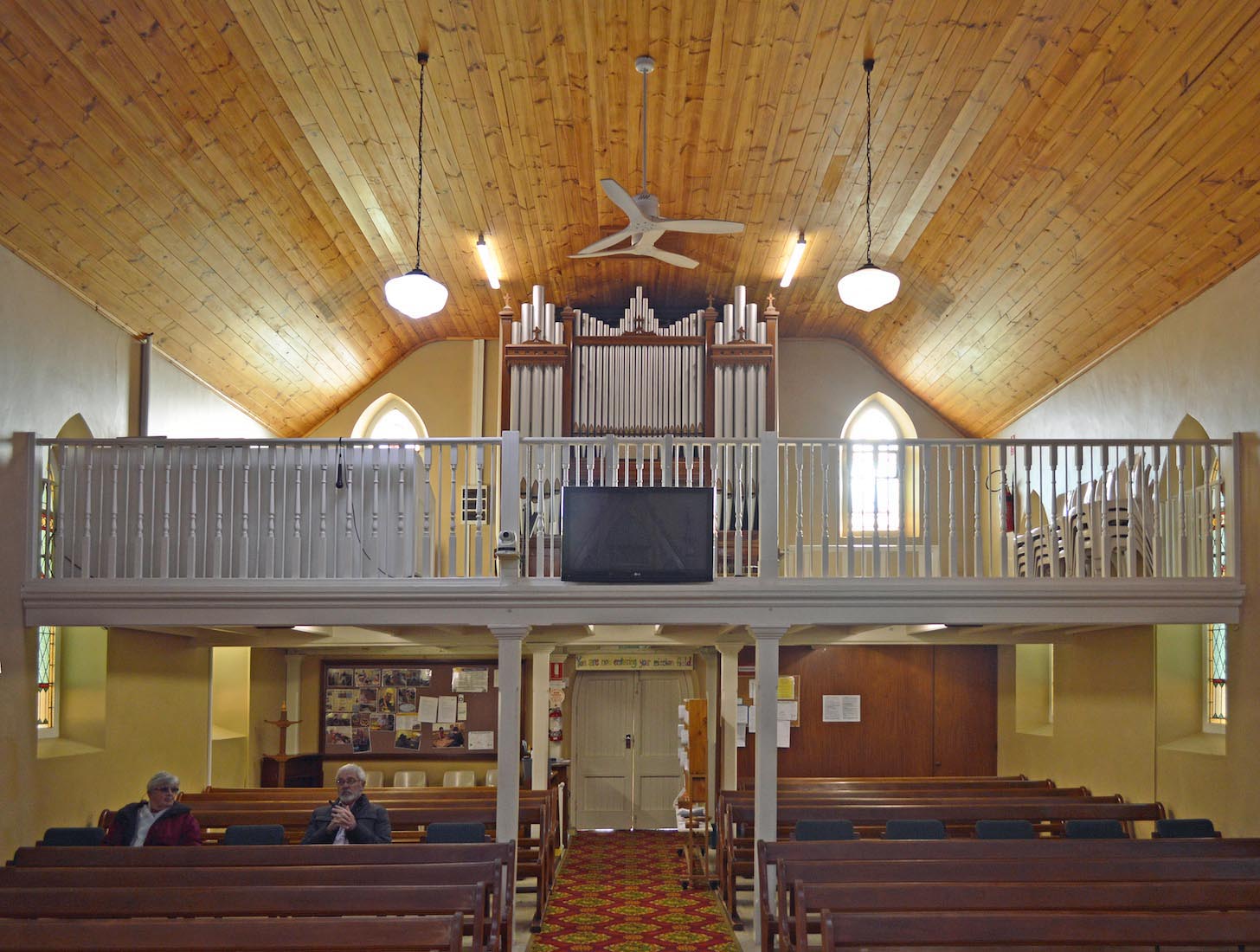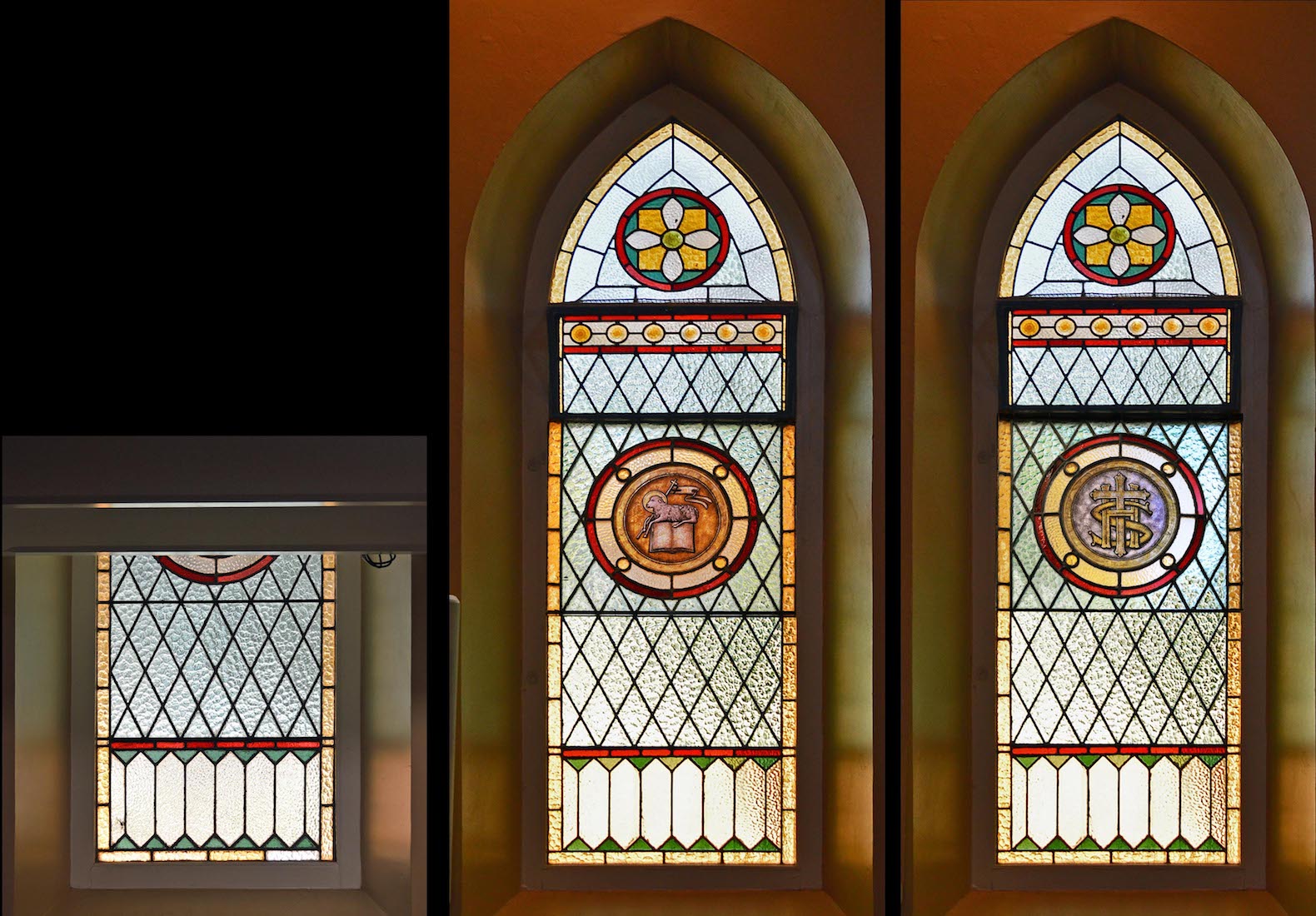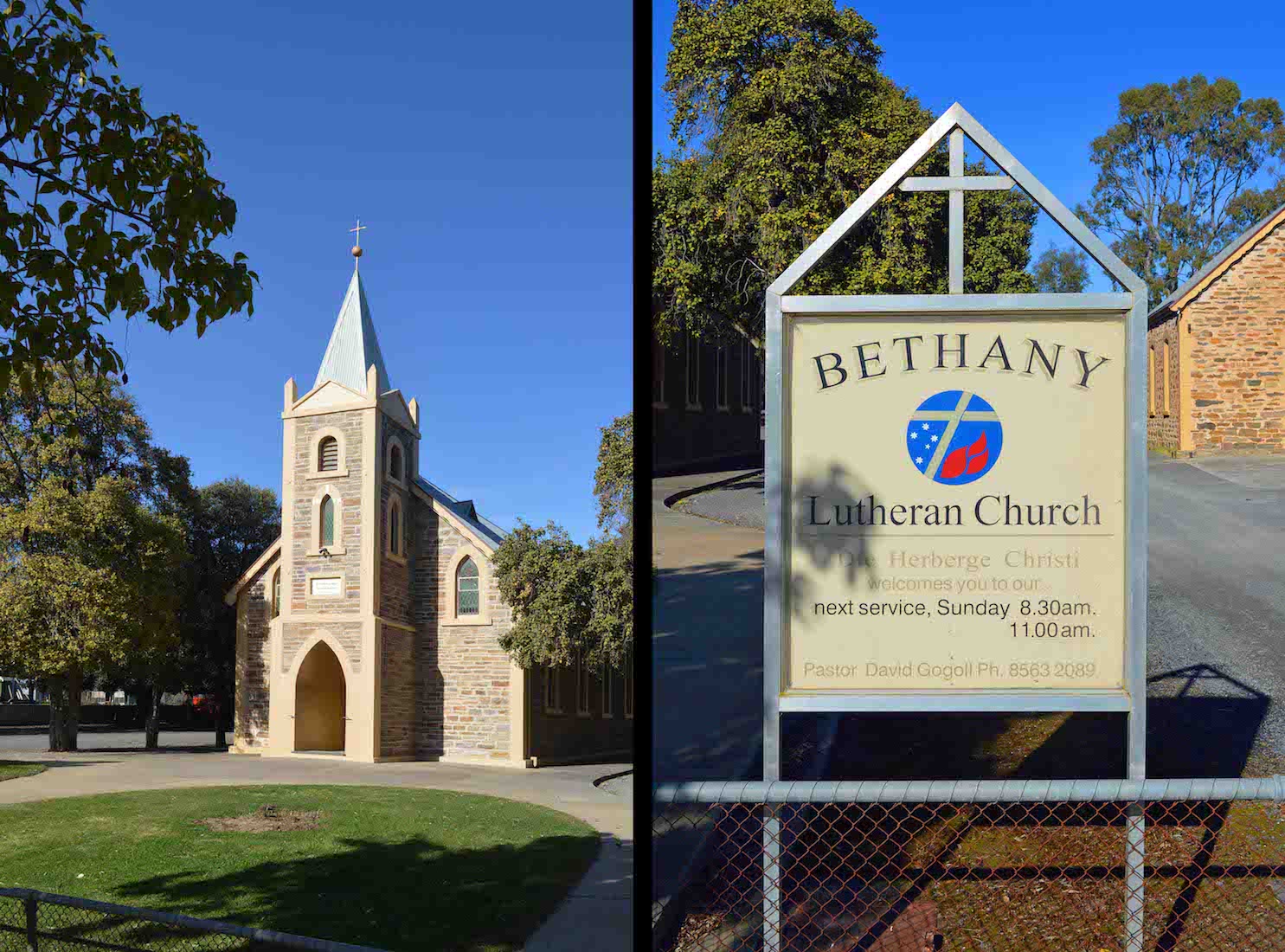
Travelling towards the hills on the Bethany Road, we come to the attractive little Bethany Church on our right. The tower faces geographical north, and shows up well in the morning sun. The Church sign gives information about the pastor and services, and displays the Lutheran logo of Cross, Southern Cross, and Pentecost flames of the Holy Spirit.
2. FRONT WALL
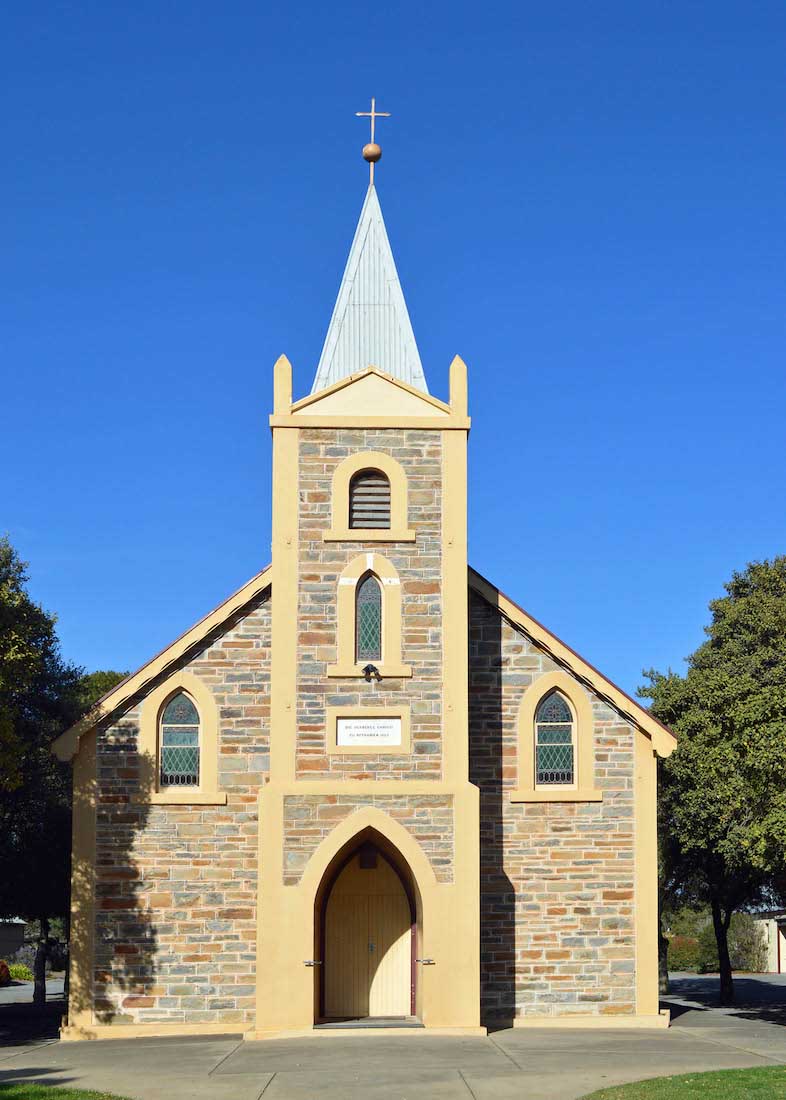
The Bethany Church is fairly typical of the Barossa Lutheran churches. It has simple lines, beautiful stone walls, and is immaculately presented. The two side windows face out from the balcony inside. I was unable to gain access to the tower, but it appears that there is a single bell installed therein.
3. NORTHWEST VIEW
We shall follow our usual practice and walk right around the outside of the Church. In the foreground is a large memorial rock. The plaque on it reads: ‘In commemoration of the departure of the pioneer missionaries from Bethany 22nd October 1875 to establish the Hermannsburg Mission among the Aborigines in Central Australia. Unveiled 19th October 1975.’
4. NORTH WALL
It is hard to gain much appreciation of the side walls of this Church. We have to assume that the early Bethany congregation was very concerned about the summer heat!
5. PARISH OFFICE
Northeast of the Church stands the Parish Office, purpose built in 1995.
6. COVERED SHELTER
Behind the Church is a curious primitive shelter ot thatched roof held up by rough wooden supports. Perhaps originally a shelter for the horses of the congregation?
7. PAST THE VESTRY
Continuing our walk, we pass the vestry attached to the Eastern end of the Church. We notice there are five windows along the side wall of the Church. Ahead of us is another building: the Church hall and Sunday School.
8. SOUTHEAST VIEW
The air conditioning is a modern touch, valued by the congregation.
9. WEST VIEW OF THE HALL
Continuing around towards the road, we can look back on the hall. The thatched shelter can be seen behind.
10. BACK TO THE TOWER
This brings us back to the front tower. The South wall of the Church is as shaded and concealed as the North side. The cross on the spire of the tower sits above a sphere representing the world.
11. FRONT ENTRY
Time for us to enter the Church! Two short rails help us to negotiate the small step. There are coat hooks on the left hand side of the porch. Above the door is a small sign in German: ‘Die Herberge Christi zu Bethanian 1883’ (The Dwelling Place of Christ in Bethany 1883). A nice thought!
12. VESTRY PHOTOGRAPHS
In fact, on our visit we enter through the vestry at the back of the Church. On one wall is a set of photographs of Church pastors. It is interesting to notice the variation in pastoral dress. Obviously the present pastor is the most colourful!
13. DISPLAY CABINET
Many cathedrals around the world have a treasury where priceless artefacts are displayed. Here there are some interesting memories of the olden days, including some old copies of the Bible.
14. OLD SKETCH
On top of the display cabinet in the vestry is this old framed picture: Martin Luther in person!
15. NAVE
From the rear of the Church is this pleasant view of the nave. We observe the carpet on the floor, and at front a drumkit indicates a movement with the times. But the focus is on the central altar with its Bible and crucifix.
16. SOUTH WALL
This view of the South wall shows four of the five windows. In our exploration of the Barossa churches we shall find many windows like this with clear lattice work and a central motif. The rear balcony covers over two of the windows on either side of the nave.
17. SOUTH WINDOWS
These three windows show from left: • a slightly budded cross with a Celtic-like circle at its centre; • an angel carrying a banner on which is written ‘Gloria in Excelsis Deo’ (Glory in the highest to God); • a picture of the Risen Christ walking on the clouds.
18. BALCONY
At the back of the Church is a large balcony supporting a pipe organ, and providing extra seating. We notice how the balcony covers the windows on either side.
19. SOUTH SIDE COVERED WINDOWS
The left frame here shows what can be seen of the windows from the floor of the Church. In the right two frames we have reconstructed the windows! Two well-known Christian symbols are shown here: The Lamb with Banner on an open Bible, and the iconogram IHS (an abbreviation for Jesus in Latinised Greek – IES), with the ‘I’ made into a Cross.
20. CHILDREN’S AREA
Many churches today have an area set aside for young children.



